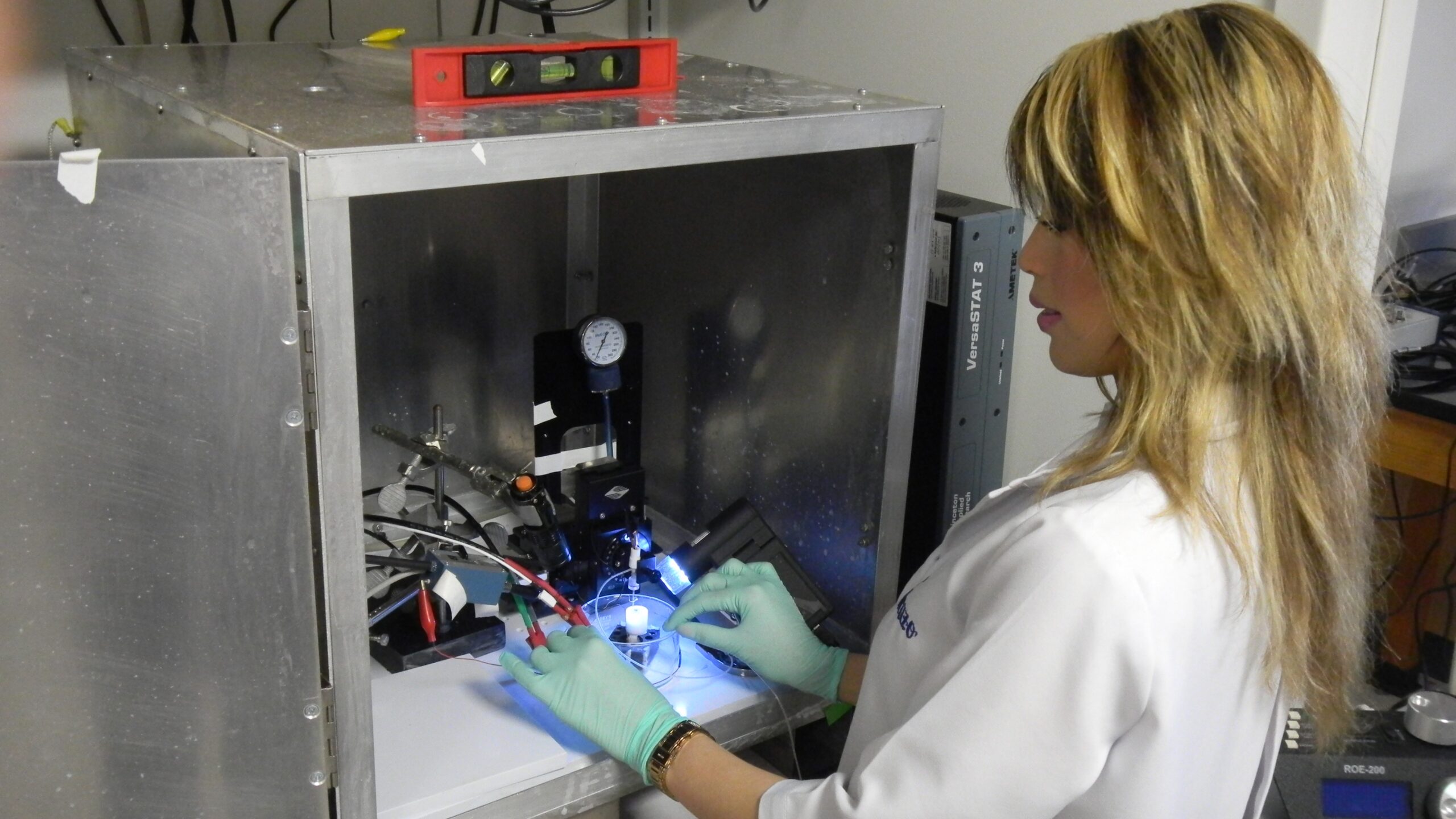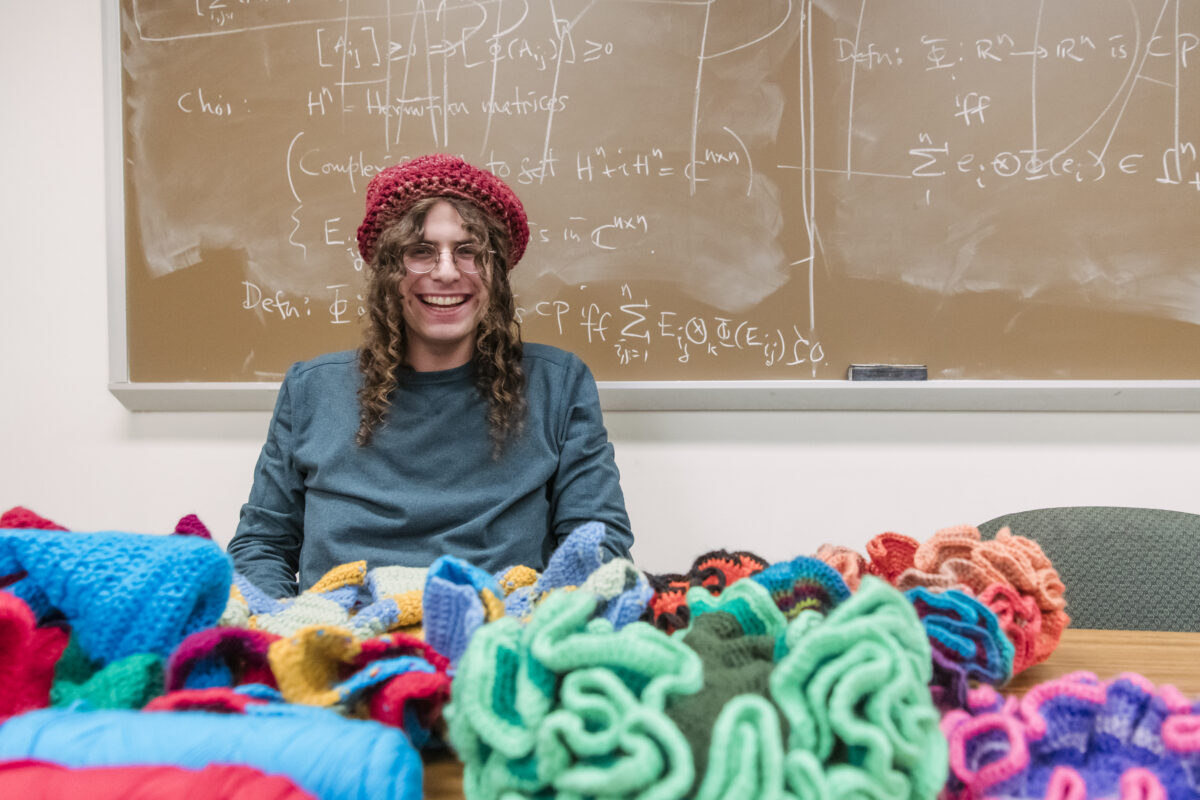The National Science Foundation has awarded Ryan White, assistant professor of chemistry and biochemistry, $360,000 over three years as part of the NSF’s Understanding the Brain program, supported by the White House’s BRAIN Initiative.
White’s research will build on work by graduate student Florika “Flaire” Macazo ’16 Ph.D., chemistry, to develop a technique using naturally-occurring protein channels, a kind of molecular gate, to measure concentrations of ions passing in and out of cells. Measuring the concentrations of charged molecules (ions) passing through cell membranes in the brain could increase understanding of cell-to-cell communication in healthy brains and those with neurodevelopmental disorders.
The path to this grant wasn’t easy. When Macazo first had the idea, she says, “it seemed like it wasn’t doable because I didn’t have the instrument” needed to collect data, but “one day [Dr. White] came into the lab and said, ‘Why don’t you just build one?’”
Over the next 10 months, with White’s support, Macazo built the instrument from parts, developed software for analyzing the instrument’s data (with no prior coding experience), conducted proof-of-principle experiments, and published it in a premier chemistry journal in early February 2016.
Asked what future challenges he may face with this research, White responded without hesitation: “Flaire graduating.” Macazo successfully defended her Ph.D. thesis in April after only four years at UMBC.
The positive feelings about this collaboration are mutual. At one point last summer, “I hit that moment when I wanted a different project,” Macazo says—that moment when the challenges seemed insurmountable. “But he just kept me going; he kept motivating me. He believed in my capability as a researcher.”
Macazo’s project expands the capability of an established technique, scanning ion conductance microscopy (SICM), which uses electric current to create a topographical map of a nanoscale surface. In SICM, a researcher uses an instrument comparable to a precise claw-style arcade game to scan the surface at very close range. Instead of a claw, she uses a pipet with a nanoscale tip filled with a mixture of ions. When close enough to the surface, the pipet impedes ions, and, thus, electrical current, from flowing through the tip opening. Measuring the distance at which current is blocked as the pipet is passed across the surface creates a map of the microscopic peaks and valleys on the surface.
By adding biological pores, such as naturally-occurring protein channels, SICM becomes bio-SICM (bio-inspired SICM). Protein channels are proteins embedded in cell membranes that serve as gates for the flow of ions. A channel lets some molecules through and blocks others based on characteristics such as size and charge; some channels are pickier than others.
In her novel technique, Macazo recreated a simple cell membrane at the pipet tip and embedded the protein channel in it. She has successfully tested a channel called alpha-hemolysin, which allows anything smaller than 1.4 nanometers across to pass through. One use of the grant funds will be to develop the technique with channels other than alpha-hemolysin. The ideal channel would be specific for a single molecule, such as ATP, which is central to intercellular signaling in the brain.
One advantage to bio-SICM is that it can detect precisely where on a surface ions are being released. Another is that the data output allows the researcher to detect single molecules traveling through the channel. Methods without the channels can’t approach that level of resolution.
Macazo will depart the lab at the end of the summer for a postdoc. White will continue the research she helped begin. The lab is currently writing a second paper for publication based on this work, and the technique is gaining traction in the field. The new NSF funding will allow White to further explore this project and to hire a new postdoc, whom Macazo will train before she leaves.
“Nobody’s really done this before,” White says. It wasn’t the obvious next step from the lab’s previous research, either, but the funding validates the direction the lab is heading. “It puts us in a new area, and the potential to be a pioneer in that field is really exciting.”
Image: Florika Macazo ’16 using the BioSCIM instrument she built; photo: Ryan White.
Tags: ChemBiochem, CNMS, Research




